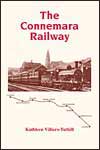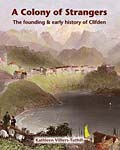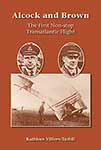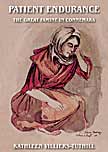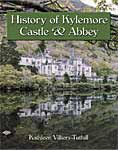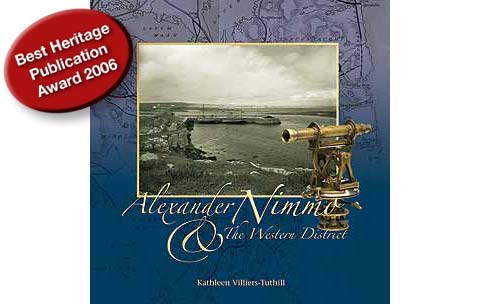
Alexander Nimmo & the Western District
ISBN 0-9530455-3-6
978-0-9530455-3-6
OUT OF PRINT
‘Kathleen Villiers-Tuthill’s Alexander Nimmo & The Western District is nothing less than an extraordinary triumph. … it is lavishly illustrated and beautifully imagined … For me, it’s the finest non-fiction book published in Ireland this year, a labour of love, as all the best books are. Anyone interested in the history of Connemara, its unique literary traditions, landscape and culture, would relish a copy of this exceptional work.’ ‘This fascinating man, who created many of the towns, harbours, and roads that we are all familiar with in Connemara today, has been magnificently brought to life by Kathleen Villiers-Tuthill, a local historian who has made Clifden and Connemara very much her own territory. Happily for us all she is obsessed with her subject. Since 1986 she keeps revising and adding to our growing library of knowledge of the life and times around the world famous Twelve Bens. Her books are well researched, and very readable. Her current book [Alexander Nimmo & The Western District], with its stunning maps, and easy to follow layout, is an absorbing picture of an intelligent man who, free from moralistic or religious overtones, worked hard to give an impoverished community an alternative and reasonable lifestyle to that of an enslaved tenant.’ ‘… historian Kathleen Villiers-Tuthill has discovered, Nimmo supervised the erection of over 40 piers along the west coast - along with 243 miles of road and a survey of two-thirds of the highly indented coastline. And there's more. Roundstone wouldn't have existed without him, … Yet his efforts weren't immediately recognised, as she discovered, and he wasn't given adequate support. He died at work at the age of 49, when the authorities were trying to blame him - rather than weather and funding delays - for the failure of some of his roads and bridges. Villiers-Tuthill studied much of the evidence given by him to government inquiries and commissions, and concludes that he was a man of principle and ideas … The full version, along with many of Nimmo's own reports and wonderful maps, can be found in Alexander Nimmo and the Western District, by Kathleen Villiers-Tuthill’. ‘Kathleen Villiers-Tuthill gives us the full story of Alexander Nimmo, the man and his significant engineering achievements in the West of Ireland during the early Nineteenth Century … Each chapter is broken up into neat sections, which make it easy to read and ensure that it is of as much interest to the amateur as to the social historian.’ ‘Forgotten no more. The memory of legendary Scottish engineer, Alexander Nimmo, a man who left an indelible mark on life here in the west, is revived and preserved in a new book compiled by Kathleen Villiers-Tuthill from Clifden … a magnificent tribute to a man whose work had slipped into the mists of time, only to be brought back to life by some extensive research by the Connemara author.’ ‘… a comprehensive and readable account of the creation of Alexander Nimmo’s monumental works in the Western District from 1822 to 1832, the year he died’. |
Alexander Nimmo, pioneering Scottish engineer, came to Ireland in 1811 and remained in the country until his death in 1832. During this time he was employed by a number of government bodies on various key projects throughout the country: he conducted surveys for the Bog Commission in Kerry and Galway, he surveyed two-thirds of the coastline for the Fishery Board, he directed the construction of two hundred and forty-three miles of road in the Western District, and supervised the erection of over forty piers along the west coast. Western District ran from Sligo Bay to Galway Bay, encompassing counties Galway, Mayo, Sligo, Leitrim and Roscommon, and was set up in response to calls for relief during the famine of 1822. The roads and piers were started as public works in the same year and were ultimately responsible for the opening up of remote districts such as Connemara and Erris. The works to a great extend were financed by the government and brought large-scale employment to the poor. But more significantly they left permanent improvements in their wake. From 1822 and 1831, Alexander Nimmo had full responsibility for public works in the Western District. It was he who chose the site for the piers and the direction the roads were to take. The choices made by Nimmo at this time shaped the landscape we recognize today and resulted in the development of many of today’s villages and coastal communities. His choices also determined which districts were marginalized and which were developed. Nimmo’s decisions would inevitably bring him into conflict with local interests groups, landed proprietors and the Irish Administration in Dublin Castle and were a contributory factor in his eventual removal from the West in 1831. Alexander Nimmo & The Western District seeks to provide the reader with the background to Nimmo’s work in Ireland; to demonstrate the conditions under which he worked in the West, the infrastructure (or lack of it) that existed prior to his arrival, and the impact that his work had on the coastal regions in particular. The book outlines the material available to Nimmo when he embarked on his coastal survey, and the contemporary assumptions and ideas that may well have influenced his findings and recommendations. Nimmo’s remarkable reports to the Fishery Board on the coast from Sligo Bay to Galway Bay provide an invaluable picture of conditions on the West coast of Ireland at a time when relatively few travellers documented the region and are reproduced in their entirety in the appendices to this book. The book also carries Nimmo’s drawings of his piers, several maps of his roads, along with early maps of the five counties that made up the Western District. Charts of individual bays and sections of the coast are also reproduced from his chart of the Irish coast, first published in 1832. |
By the same author

